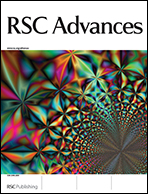This paper reports a new method utilizing varied-amplitude and swept-frequency longitudinal acoustic waves to achieve nonspecific biomolecular binding removal and regeneration of specific biomolecular binding sites. The method is demonstrated by constructing an acoustic wave operation system to generate a longitudinal acoustic wave (LAW) and exert acoustic energy through liquid medium onto the molecules bound to a sample chip. The sample chip was made of a diced glass slide chip (GSC) modified with gold nanoparticles (GNPs), possessing particle plasmon resonance (PPR) properties. Biotin was immobilized on the GNP-GSC as a probe. Several adsorbates, including bovine serum albumin, anti-biotin, anti-fibrinogen, and streptavidin, were chosen to examine the regeneration capability and removal efficiency under the activation of the LAW. The acoustic wave is produced by a piezoelectric transducer driven with an amplitude of 0–50 Vrms and a sweeping frequency from 100 kHz to 1 MHz. The absorbance spectra of the PPR band were used for quantitative analysis of the regeneration capability and removal efficiency by this method. Results show that nonspecific binding removal and specific binding regeneration can be effectively achieved by this LAW operation system. Moreover, the GNP-GSC can be used at least five times by this regeneration method.

You have access to this article
 Please wait while we load your content...
Something went wrong. Try again?
Please wait while we load your content...
Something went wrong. Try again?


 Please wait while we load your content...
Please wait while we load your content...